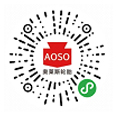
Ⅰ. Possible influences and consequences caused by various angles
1. The toe-in angle. Too large positive toe-in angle will cause the extroversion and rapid wear of heavy truck tires, and the worn form is sawtooth configuration. The worn form that is similar to the form caused by too large positive camber angle will occur on the radial tyre. When stroking the tyre from the inside to the outside, there is a sharp feeling in the inner edge of the tread, the steering is instable, the straightness is poor, and the wheels shiver. Too large toe-out will cause rapid wear on the inside of the tyre, and the worn form is serrated or lumpy. The worn form that is similar to the form caused by too large negative camber angle will occur on the radial tyre. When stroking the tyre from the inside to the outside, there is a sharp feeling in the inner edge of the tread, the steering is unstable, the straightness is poor, and the wheels shiver.
2. The kingpin caster angle. Too small kingpin caster angle will cause instability, and it lacks the ability to automatically redirect the steering wheel in steering. If the car speed is too high, it will drift, so special attention is needed on the highway. The asymmetry of the kingpin caster angle will cause off tracking. If the kingpin caster angle difference between the left and right wheel is 0.5 degrees, the off tracking phenomenon will occur.
3. The camber angle. Too large positive camber angle will cause the lateral side wear on the outside tyre, which will accelerate the wear of the suspension system, and the vehicle will run off towards the side with a larger positive camber angle. On the other hand, too large negative camber angle will cause the lateral side wear on the inside tyre of heavy truck tires, which will accelerate the wear of the suspension system, and the vehicle will run off towards the side with a larger negative camber angle.
4. The steering angle. If the front-wheel turning angle is more than 1.5 degrees, the off tracking will happen to the vehicle, and the direction of off-tracking is towards the side with the smaller wheelbase.
5. The flinch angle. When the flinch angle reaches a certain degree, the off tracking will happen to the vehicle, and the direction of off-tracking is towards the side with the smaller wheelbase.
6. The thrust angle. The thrust angle can cause heavy truck tyre wear, steering misalignment, steering wheel deviation, and off-tracking. In addition, the car body will go straight askew.
Ⅱ. Inductive analysis of various symptoms
1. The left-right asymmetry of the front wheel kingpin caster angle. If the deviation is more than 0.5 degrees, the direction of off tracking is towards the side with a smaller kingpin caster angle.
2. The left-right asymmetry of the front wheel camber angle. If the deviation is more than 0.5 degrees, the direction of off-tracking is towards the side with the largest front wheel camber angle.
3. The left-right asymmetry of the rear wheel camber angle. If the deviation is more than 0.5 degrees, the direction of off-tracking is towards the side with the smallest rear wheel camber angle.
4. The wheelbase change can be observed according to the flinch angle of the front and rear axles. When the sum of the front and rear flinch angles exceeds 0.2 degrees, there will be a perceptible off tracking, and the off tracking will be toward the side with the smaller wheelbase.
5. The side-slipping is mostly caused by tyres.
6. The tyre pressure of heavy truck tyres is not uniform.
7. The asymmetry and slipping of a brake.
8. The power-assisted steering is imbalanced.
9. The wear and disorder of the suspension system parts.
 E-mail: tyre@aolaisi.com.cn
E-mail: tyre@aolaisi.com.cn Tel: 0714-3509761
Tel: 0714-3509761  Language
Language 




